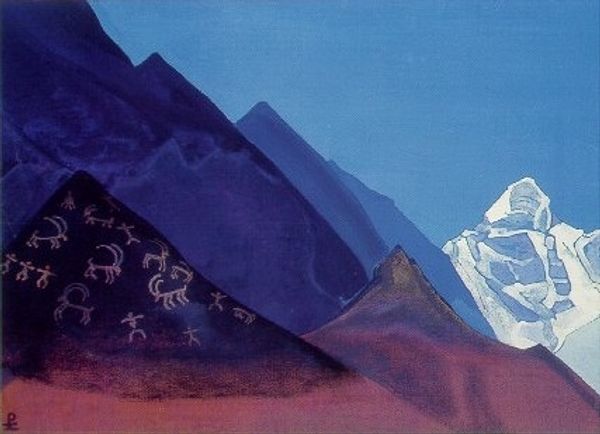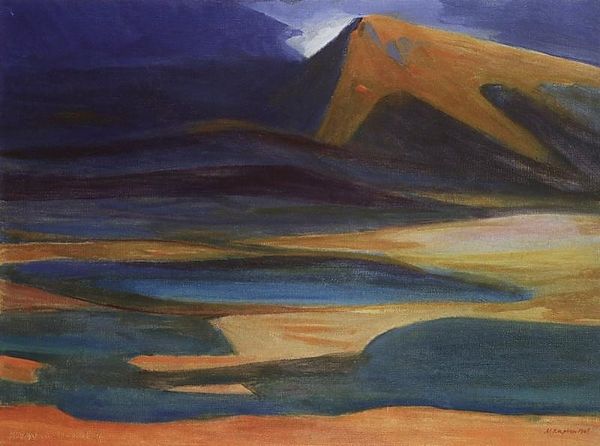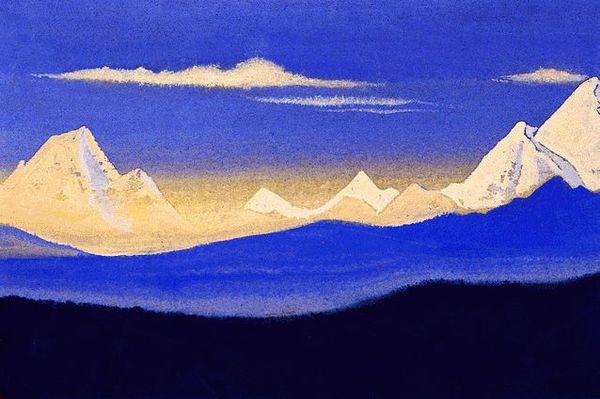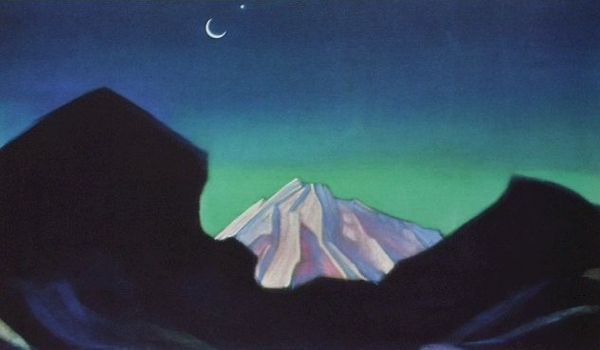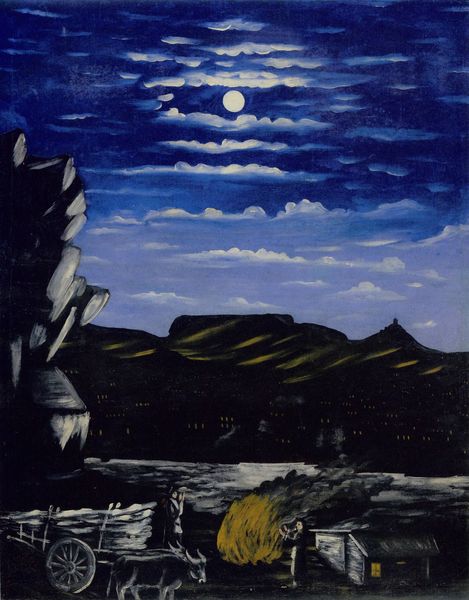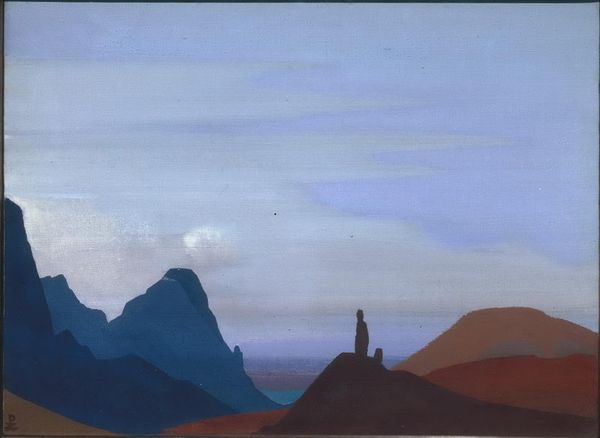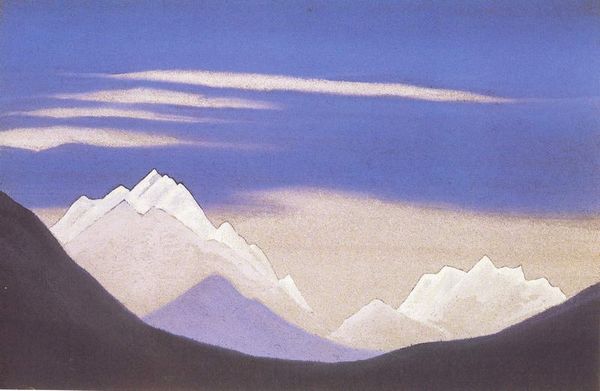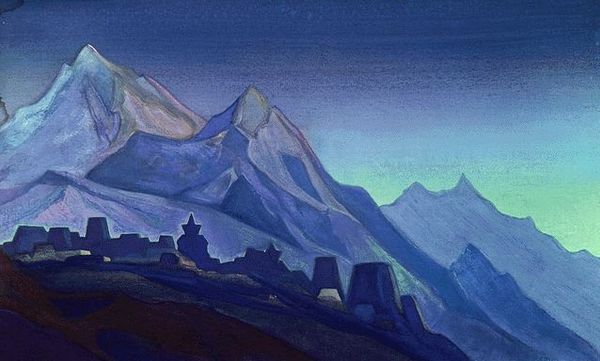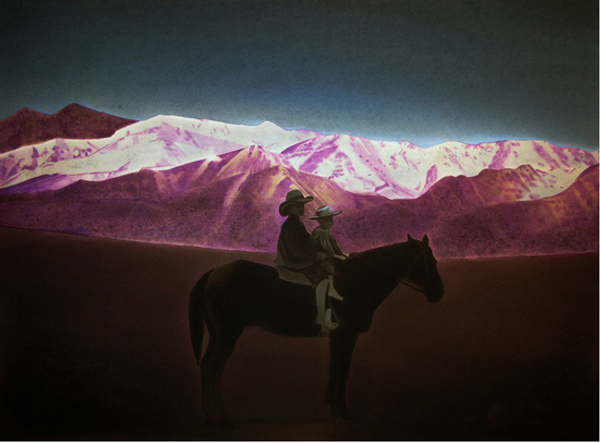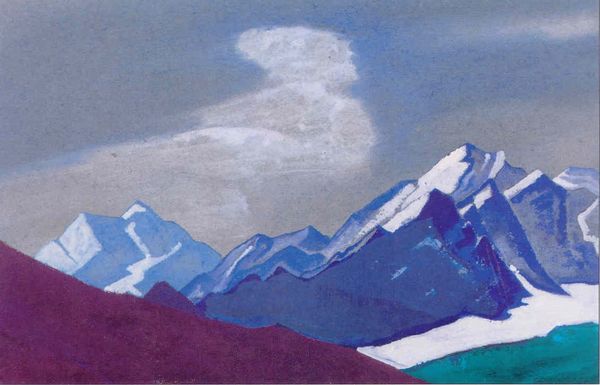
Copyright: Public domain
Curator: Standing before us is Nicholas Roerich's "The Philosopher. Silence.", created in 1940 using tempera. What strikes you immediately about this work? Editor: Well, there's a profound stillness that emanates from it. The muted blues and reds, the solitary figure against the colossal mountains, create a powerful sense of contemplative solitude. It feels like a visual representation of inner peace, but perhaps also isolation during wartime. Curator: It’s fascinating how Roerich employs such simple materials and a somewhat flat, almost mural-like application of paint to convey complex spiritual ideas. Tempera lends itself to that matte finish, which avoids any distractions from the symbolic content. Did the economic and political backdrop of 1940 play a role, encouraging such austerity? Editor: Absolutely. Looking at the socio-political context of 1940, amidst the escalating horrors of World War II, Roerich, a known theosophist and advocate for peace, positions silence as resistance. The philosopher, perhaps a sage, finds solace and strength not in the noise of conflict but in internal reflection, possibly symbolizing a commitment to inner work during global unrest. The symbolic resonance is incredibly relevant, particularly through today’s polarized discourses and their connection to our own ethical consumption habits. Curator: Considering Roerich's fascination with Eastern philosophy, I find the use of tempera significant. The colors achieve an interesting vibrancy, reminding me of pigments used in Tibetan thangkas. Editor: Precisely! The choice of tempera contributes to this specific visual language deeply embedded in spiritual and artistic traditions from Central Asia, emphasizing silence not merely as an absence of sound but as a potent, transformative space for growth—offering us a powerful visual experience, reminding us to reflect, listen, and find inner stillness during challenging times. Curator: It certainly offers a different perspective on Roerich’s work by moving away from the grandeur typically seen in his Himalayan landscapes. Here, we have a stripped-down essence of his artistic vision. Editor: Indeed. It compels us to reconsider the raw materials from which cultural narratives are built, to challenge dominant voices, and amplify marginalized experiences and stories.
Comments
No comments
Be the first to comment and join the conversation on the ultimate creative platform.

